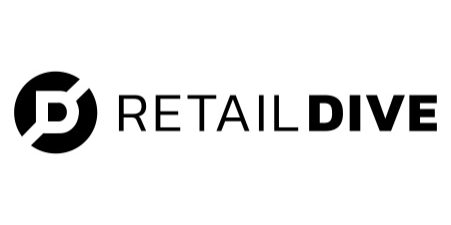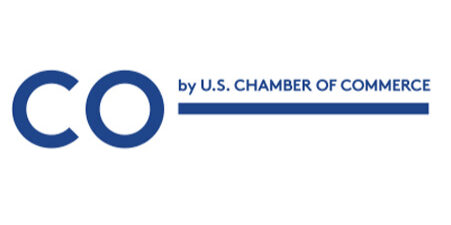2017 Retail Outlook
Disruptions to the retail landscape over the past several years seem endless. 2016 was cited by many retailers as one of the most challenging years on record. The proliferation of new and deepening competitive forces disintermediating traditional retail, combined with elevated geopolitical instability, has created an uncertain future.
For Peter J. Solomon Company, 2016 featured several exciting developments. In June, PJSC took on a 51% partner in Natixis, the international corporate and investment banking, insurance and financial services arm of Groupe BPCE, France’s second largest financial institution. Our entrepreneurially-spirited company is now aligned with a global M&A and financing platform and an increased breadth of product offerings. We continued to build our retail advisory practice with the addition of a Food Retail & Restaurants team led by Scott Moses. We have also expanded into new verticals with the launch of our Energy and Infrastructure Advisory groups and further developed our restructuring practice.
Looking ahead, we see the following critical trends which will influence retail transaction activity in the coming months.
ONGOING GEOPOLITICAL UNCERTAINTY WILL NEGATIVELY IMPACT M&A ACTIVITY.
Global geopolitical changes – a new U.S. presidential administration, upcoming European elections, the persisting threat of terrorist activity and the Brexit referendum – along with a strengthening U.S. Dollar, will impact transaction activity, as well as consumer spending. In the United States, uncertainty surrounding policy decisions the Trump administration will make with respect to key matters such as corporate taxes, tariffs, foreign investment and trade agreements will result in a “wait and see” approach to deal making, as potential acquirers await clarity on policy direction and the impacts of such policies both on the acquirers’ businesses and those of potential targets.
A tariff increase on goods from important markets such as China, or the levying of a border adjustment tax, which would no longer allow U.S. companies to deduct foreign-sourced input costs from their taxable income, could have a substantial impact on earnings of many import-heavy brands and retailers. However, the possibility of a system-wide corporate tax overhaul and/or a one-time repatriation holiday could result in more cash available for M&A transactions by U.S. acquirers. Lower corporate tax rates, moreover, could positively impact valuations and leverage levels. These factors, combined with the stronger dollar, could make U.S. buyers more competitive.
CONTINUED DISINTERMEDIATION OF TRADITIONAL U.S. RETAILING WILL DRIVE CONSOLIDATION.
Negative-to-flat comps have become the “new normal” as many traditional retailers face headwinds from the ongoing consumer migration to online and the resulting decline in store traffic. Retailers are not able to capture the lion’s share of the sales shift from bricks and mortar to their own online channel, which has two implications on M&A activity in the near-term. First, we expect to see further consolidation – and store base rationalizations – in a still-overstored environment. Second, traditional retailers will be increasingly focused on acquiring online concepts that provide a brand and/or add capabilities to accelerate their own online penetration, albeit at more rational valuations as we discuss below.
One category where this disintermediation is most prominent is apparel. U.S. apparel retailers are not only contending with a growing penetration of online sales, but also are facing mounting competition from international retailers with rapid supply chain models. Zara, H&M and ASOS have significantly expanded their market shares while newer entrants like Primark are establishing a U.S. presence. Many of these have formidable online businesses. In addition, the continuation of direct-to-consumer startups and a surge in alternative models including resale, rental and subscription-based, are further crowding an already saturated market. Finally, it is widely viewed that Amazon will displace Macy’s and The TJX Companies as the largest apparel retailer in the U.S. by the end of 2017 and is expected to account for nearly 20% of total U.S. apparel sales by 2020. This onslaught of disintermediating forces is occurring in an environment where consumer spending on softlines remains tepid across the value spectrum from mass to luxury.
E-COMMERCE PURE-PLAYS WILL BE FORCED TO COMBINE WITH TRADITIONAL RETAIL OR MEDIA INCUMBENTS TO SURVIVE.
In last year’s letter we discussed the tenuous future that lay ahead for digital retailers and predicted that many of these venture capital-backed e-commerce companies would face structural challenges and hurdles to profitability on a stand-alone basis. While Amazon and eBay remain mainstays, 2016 provided few new e-commerce success stories and a number of cautionary tales. Flash sale sites, for example, which had been in steady decline over the past few years, finally fell victim to the model’s inability to achieve profitability with both Gilt and One King’s Lane being acquired by retailers at considerable discounts. Conversely, Walmart made a $3 billion bet on its acquisition of Jet.com, seeking to close its widening online gap with Amazon. In doing so, Walmart brought on-board a proven management team it expects will materially transform its online competitiveness.
With respect to the broader universe of online-only retailers, few barriers to entry and a historically steady flow of venture capital funding in recent years have resulted in market saturation. Many pure-play e-commerce companies, however, were built on less-than-sound business models with structurally underpriced offerings. The stumbling blocks that continue to hamper their success include gross margin structure, the rapidly increasing cost of customer acquisition and weak customer retention.
Online customer acquisition costs have skyrocketed. Going forward, the ability of e-commerce players to build scale will be increasingly dependent on organic “earned” traffic or a complementary channel strategy. Ironically, brick and mortar may prove critical to driving a healthy branded online business for many companies, adding capital intensity to the digitally native model.
The days of readily available VC funding for these businesses appear to be at an end – particularly for those without a clear path to profitability. 2016 marked the first year of decline in VC funding to e-commerce companies – down over 40% – after three years of 75% annualized growth. With funding becoming much tighter, the pace of restructurings and bankruptcies over the next 12 to 18 months is almost certain to increase.
CONSOLIDATION AS A RESULT OF RESTRUCTURING OR LIQUIDATION WITHIN TRADITIONAL BRICK-AND-MORTAR RETAIL WILL ALSO ACCELERATE.
Within traditional brick and mortar, we expect the number of liquidations and bankruptcies to increase as changing retail industry dynamics and shifting consumer purchasing habits weed out companies that have failed to remain relevant and engage their customers. To the extent these companies have a “reason for being,” many will likely be purchased by larger strategic acquirers, either as right-sized going-concerns or IP liquidations. In the case of the latter, brand management companies such as Authentic Brands, Iconix, Marquee Brands and Sequential Brands will likely have much to choose from.
We expect 2017 to feature a domino effect from traffic declines, anchor store closures – and ultimately mall closures. Several major retailers have announced plans to further reduce their retail footprints this year. As they continue to shutter and downsize locations, lease terminations could accelerate as remaining tenants invoke co-tenancy clauses. Analysts predict at least 150 mall closures over the next decade, and any large anchor bankruptcy could drive that figure up. What may emerge is a new acquisition model, with real estate firms and mall owners becoming more active in salvaging long-standing concepts (as in the case of Aeropostale) in order to keep the lights on, repurposing square footage or supporting new concepts to fill vacancies.
BACKLOG OF SPONSOR-OWNED RETAIL AND CONSUMER COMPANIES LIKELY TO SEEK A NEAR-TERM EXIT.
The M&A market has become bifurcated between extraordinarily high (mid-teen) multiples for fast-growing, profitable branded businesses – versus low (mid-single digit) multiples for more mature businesses, particularly in cases where they are reliant on department store distribution or are exposed to Amazon competition. This high / low valuation trend, along with volatile public markets, weakened exit opportunities for many sponsor-owned retail and consumer companies in 2016. Aggregate proceeds from sponsor-backed IPOs are below past cycles, with many large offerings on hold.
Only two North American retail IPOs (Aritzia and At Home) priced in 2016, neither of which have generated strong returns to date. A meaningful number of filed retail IPOs wait in the wings while others have been pulled over the past eighteen months.
A sizeable number of sponsor-owned retail and consumer companies are in the later stage of funds’ investment horizons and may look for an exit in 2017. It is noteworthy that 20% of retail and consumer companies owned by the top 48 domestic retail and consumer private equity firms have been held for over seven years, and 33% of retail and consumer companies owned by this same group have been held for over five years. Ongoing public market volatility may continue to render public markets too inhospitable for IPOs, leaving M&A as the sole viable option for an exit.
Disruptive forces continue to jolt the retail landscape. As anemic sales and margin pressure continue to weigh on retailers, capital allocation decisions will become increasingly scrutinized. Return on invested capital from initiatives such as investing in stores or technology infrastructure must be weighed against shareholder returns. As such, M&A will also play an important role in decisions at the board and management levels.
At this time of complexity and uncertainty, we remain dedicated to providing our clients with strategic and financial solutions that generate long-term shareholder value. On behalf of the Global Retail Group and all our PJSC colleagues, we wish you a prosperous 2017 and look forward to the opportunity to work together in the months ahead.






